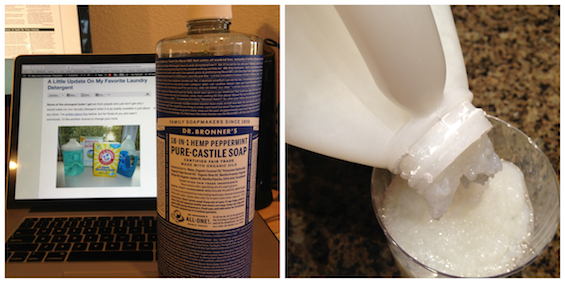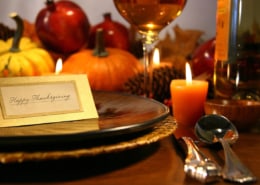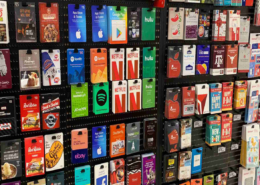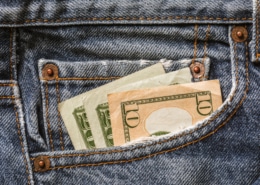Mistakes We Make and the Courage to Fix Them
My fifth-grade teacher, Mr. Migaki, taught us it’s important to learn from history so we don’t repeat mistakes we’ve made in the past. He made that lesson real when he said that last year counts as history, and so does last month and last week.
Mr. Migaki said that something is only a mistake if you can’t fix it. Sometimes he would let us retake our tests to fix our mistakes. We got do-overs!
He’d grade our papers with a red pen, but if the do-over fixed the original mistake (he never, ever gave us the right answer) he would applaud the success by crossing through the bad grade, turning it into an A.
I couldn’t help but recall this wonderful teacher and give thanks for that life lesson when this message from Jenny turned up in my inbox …
Dear Mary: I have to tell you, in response to Your Consumer Behavior Is Keeping Your Broke, how I fell victim to a good salesman. Fortunately, there’s a happy ending.
I was shopping for groceries and the announcement was to gather around at the end of Aisle 2 in two minutes for an unadvertised giveaway. AND if you got there right away, you got an eyeglass cleaner cloth, which was promised to be your ticket to something special later, as it was first-come, first-served. You know the drill, I’m sure!
Anyway, I watched the whole pitch. It was for an Ultimate Wine Opener Kit. The products did look great, I must admit! And of course, according to the salesperson, each item purchased separately would cost $170. QVC, he said, had it all for $99 plus shipping and handling, and today he was authorized to sell this set for just $49!
Then he had us come in closer because he told us quietly that if we had our ticket from the beginning, he would also throw in a wine chiller worth $20 for free! Well, most people were smart enough to walk away. However, I really liked the items and $49 for everything seemed OK.
As I hemmed and hawed, he pulled out his next trick and put one in my hand. Of course, that sealed the deal and I bought it.
The next day, I had a cleared head and went on Amazon. Sure enough, I found essentially the same set for just $17.
Happy ending? The grocery store took it back and refunded all my money, no questions asked.
Lessons reinforced:
1. The salesperson is really not offering such a good deal.
2. The free gift is not worth it.
3. When they pull you in closer for a secret, it’s all part of the pitch.
4. Once it’s in your hands it’s all over, so don’t touch it in the first place!
I knew all these things, but fell for it anyway. I’m so glad I could return it and get my money back.
Thanks for your columns and advice. You are such a help to people like me! Lara
Dear Lara: Your story illustrates just how powerful a well-executed marketing campaign can be. I have no doubt that the company sponsoring this “in-store giveaway” worked for many months and spent a great deal of money crafting exactly every moment of the presentation.
Everything from the urgency built into the announcement (in two minutes!) to the way the guy leaned in to make you feel special by telling you a secret—all of it was to manipulate you to act impulsively. And it worked.
But ultimately you didn’t let them control your and your money. You made a mistake, but you didn’t stop at that. You demanded a do-over, then changed your response to the offer. For that, you get an A!
We are a Everyday Cheapskate participates in the Amazon Services LLC Associates Program, an affiliate advertising program designed to provide a means for us to earn from qualifying purchases, at no cost to you., an affiliate advertising program designed to provide a means for us to earn fees by linking to Amazon, at no cost to you.
Dear Mary: I love all the tips you give for making your own cleaning solutions. Sadly, over the past year, my youngest daughter has developed a severe fragrance allergy. This means I can no longer use blue Dawn in any of my cleaning solutions. Do you know of any substitutes for Dawn that would work as well in the homemade liquid laundry detergent? Would liquid castile soap be a good alternative? Jenny
Dear Jenny: You’re not the first to inquire about substitutes for blue Dawn for a variety of reasons. I decided to test your suggestion by substituting the very popular Dr. Bronner’s Pure Castile Soap for the 3/4 cup of Dawn called for in the recipe. My immediate reaction was that it mixed up just like blue Dawn.
I ran a few loads of laundry using this alternative recipe. A few days later when I began a laundry load by first shaking the container to remix the ingredients that typically settle, it felt weird like it had thickened. It wasn’t easy to pour—gloppy and slime-like. And by the end of that week, my husband noticed the return of that annoying itchy feeling he gets with commercial laundry products.
And that detergent? It kept getting thicker and gloppier until after 10 days it solidified! I threw the entire mess out—plastic jug and all.
My conclusion is that Dr. Bronner’s Pure Castile Soap is not a reasonable substitute for blue Dawn in our homemade liquid laundry detergent. If I were a chemist, I’m sure I’d know why.
For now, I suggest you experiment using only Dr. Bronner’s “baby unscented” Pure-Castile soap as directed on the label, or some other “free and clear” commercial product. Make sure you always opt for an extra rinse and add white vinegar in that last rinse as insurance against any detergent product remaining in your daughter’s clothes and bedding.
Everyday Cheapskate participates in the Amazon Services LLC Associates Program, an affiliate advertising program designed to provide a means for us to earn from qualifying purchases, at no cost to you.
Dear Mary: I love your blog, columns, and your wonderful tips. With the cold and flu season upon us, do you have any tips on how to sanitize the refrigerator dispensers for ice and water? I see them as germ collectors. Thanks so much. Sandy
Dear Sandy: Yes! Every kitchen needs an effective antibacterial solution to clean everything from cutting boards to counters, refrigerators, and those dispensers you mention. But don’t spend $6 for a 12-ounce bottle of commercial cleaner!
Make it yourself: One quart of 70 F (cool) water plus one teaspoon of liquid bleach. Any warmer and the bleach evaporates; more bleach will harm some surfaces and fabrics. So don’t get obsessive, just measure carefully and stick with this perfect, dirt-cheap recipe that will not harm wood, paint, granite, marble, or fabric, but will kill all kinds of bacteria including salmonella and COVID-19.
Regularly sanitize all surfaces with this bleach water, particularly those that may have come in contact with raw poultry including the inside of the refrigerator. Use this to regularly clean all of the dispenser surfaces and parts. Spray, then allow to air dry.
This solution should be made fresh daily as bleach loses its effectiveness over time. Never mix bleach with ammonia or other cleaning products as harmful gases can be produced.
Thanks so much for your kind words and loyalty!

















I think being able to laugh about mistakes is just as important as learning from them, which you do wonderfully with your entertaining stories like the soap mishap. It helps people get over social stereotypes and embarrassment associated with ‘failing.’
And if anyone is curious, I think the sodium carbonate is the guilty ingredient making Dr. Bronner’s unsuitable. I’m not a chemist either, and it’s been years since I did any soapmaking, but it’s an alkaline solution and soap is made by mixing alkaline solutions and fat. Soaps in general have extra fat to ensure there’s no lye left over, since that’s the most common alkali used, but Castile soaps especially are supposed to have a lot of extra fat to make them soft and gentle. My guess is the sodium carbonate started reacting with that fat and caused a saponification reaction. And I remember reading somewhere that sodium carbonate will sometimes break down into sodium hydroxide (lye) when mixed with water. If that’s true, that probably increased the chance of a reaction.
Sorry for the long post, lol. Just thought it might interest some folks.
In fact, Dawn liquid soaps DO NOT CONTAIN AMMONIA. Just looked it up, as I use Blue Dawn a lot, and clorox (not necessarily together!) Check it out!
You might be interested to know the concept of learning from test mistake still exist. In college one professor put the 5 most missed questions on the next test, marking them with asterisk. If you got them right there was a formula for adding that number back to the previous test. Some questions ended up appearing as many as 4 times! The answers were given in review of the test, but not everyone remembered the answers. It took me a while to understand what was happening as I hadn’t had some of his lower division courses.
Mary I only recently learned that I should not mix clorax with dawn. OMG I have been doing this for years. I guess I am lucky nothing happened or maybe I didn’t mix much or possibly as you said, I may have had the water too hot.
Hey Jenny regarding a fragrance free alternative to Blue Dawn dish soap for laundry use – try “Sal-Suds” it is a Dr Bronner’s product. I suggest you go to their website and read how to and how NOT to use their products.
I do much of my laundry the very old fashioned way (by choice) with a plunger, bucket-tub & a wringer. Sal-suds works very well for laundry. But for delicates, and things that are not super grimy I just use Dr Bronners Unscented Baby – buy it by the gallon either on amazon or Dr Bronners site – it’s pricey but it is very concentrated so you use very little!!!
The problem with that, sal suds is not soap, and does not kill bacteria. It is a synthetic detergent. We really need to be laundering with soap and or hot water, sufficient to kill germs. Research will reveal that sal suds can “remove” bacteria, which means washing it away, provide it can be moved. But that is not a given, nor can I recommend you assume safety for your household.
I thought that chlorine bleach was a no-no to sanitize granite countertops.
You may be thinking and remembering vinegar. And you don’t want to use chlorine bleach full strength on granite. But a light spray of this very very weak concentration is not harmful.
Do you mean chlorine bleach?
Dr. Bronner’s has a product: Sal Suds, multipurpose – that can be used sparingly for laundry. I still use homemade, but other Jenny might want to look into that…
Again and this is a repeat, sal suds is not soap, and does not kill bacteria. It is a synthetic detergent. We really need to be laundering with soap and or hot water, sufficient to kill germs. Research will reveal that sal suds can “remove” bacteria, which means washing it away, provided it can be agitated sufficiently to wash it away. But that is not a given, nor can I recommend you assume sal suds to be safe for your household—especially when laundering sheets, towels, etc.